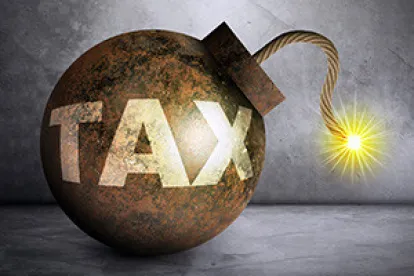Hospitality facilities built in the 1980s or 1990s (or earlier) tend to have design and layout configurations that are out of touch with a franchisor’s present market requirements. This jeopardizes the continued franchise agreement for such facilities; even though, they may have made all required modifications and modernizations required with each prior franchise renewal. The threatened loss of the franchise agreement may translate into twenty to twenty-five percent (25%) (or more) reduction in room rates (or even termination of operations). Such rate reductions are more profound and observed in locations where new development of hospitality units involving the modern design and configuration.
For property tax assessments, the valuation of hospitality facilities has typically been to capitalize its historic cash flow, either using its immediate prior year cash flow or by taking an average of three to five year cash flows (confirming such cash flows are indicative of market rates and expenses as of the valuation date). This approach, essentially, assumes that cash flow continue “ad infinitum” or for the “foreseeable future”. However, an impending loss of a franchise precludes this simple capitalization of historic cash flows. Instead, the valuation takes into account the expected reductions in the room rate revenues and, therewith, the facility’s cash flow to develop a range of values. That is, the hypothetical buyer would likely eschew the single year capitalization approach. After investigating the market for recent sales and reduced rates for non-franchise operations, the buyer would likely develop an alternative income approach that captures the anticipated revenue reductions with a discount rate that captures the increased risk. In reviewing market sales, the buyer appreciates that such sales involved purchase price development that was based on an income approach. Although a buyer could simply value the remaining years of cash flow under the franchise agreement (assuming that anything beyond that is too speculative), presumably, if it intended to continue operations, the buyer would apply a higher capitalization or discount rate, and modify the expected cash flow to capture the future reductions in room rates (i.e., apply a discounted cash flow income methodology, with residual value).
Of course, in addition to a different income approach, the tax certiorari appraiser would feel compelled to incorporate a cost approach. This valuation exercise involves reproducing or replacing the existing facility, followed by deducting all three forms of depreciation – physical, functional and/or economic (to the extent quantifiable). In determining what to build new (whether applying the reproduction cost new or replacement cost new methodology), the appraiser must determine what facility would be built in the market place as of the valuation date. Such modern facility must capture the functionality and purpose of the existing property by applying modern design, layout and materials. For example, a 1980 horizontal layout (with individual external access points for each room) for an extended stay facility would likely be built using a single external access point, vertical layout and construction, and take into account probable shared facilities with a second franchise.
Thus, the modern design and layout would have a smaller horizontal footprint, likely reduced construction and operating expenses, and the challenge of allocating the shared facilities and costs with a second franchise. Arguably, that means functional obsolescence exists at the older facility, in addition to the normal physical depreciation. With room rates expected to reduce by 20-25% in five years or less, the facility also suffers economic obsolescence of a magnitude equal to or greater than those percentages. These forms of obsolescence may also be measured by the market extraction approach, where the appraiser analyzes differences in values in sales between older and modern facilities. Needless to say, this approach captures all three obsolescence, so the appraiser must avoid double counting that could arise from application of both the market extraction approach and separate qualification of each obsolescence.
In summary, older hospitality units, in particular, those nearing the end of their franchise agreement, present complicated valuation issues that likely lead to the lower valuation. Unfortunately, assessors may fail to capture such valuation reductions by solely focusing on capitalizing historic cash flows and ignoring both an expected loss of franchise agreement and revenues.




 />i
/>i

